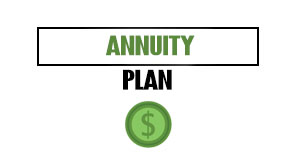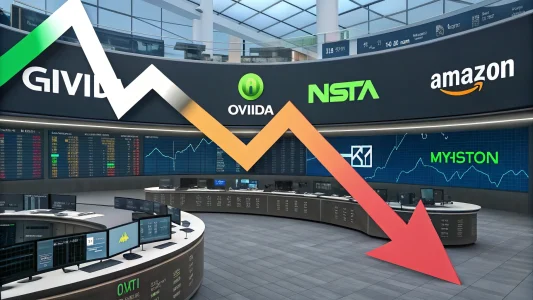Perhaps you’ve considered using prop trading as a retirement income stream to boost your income when you’re no longer working full-time. And maybe you have some concerns about the risks involved, making you unsure if prop trading is right for you.
Prop trading can be a valuable means to enhance your post-retirement income. But to make this happen, you’ll need to develop your trading skills and develop risk management strategies to protect your trades.
This guide will look at some simple strategies to improve your chances of prop trading success. To do this, we will cover the risks of prop trading and learn how to mitigate such risks. Learning how to do this will help you prop trade in a sustainable, reliable way and better ensure your chances of growing your finances in retirement.
Table of Contents
ToggleUnderstanding Prop Trading
Prop trading is short for proprietary trading. When prop trading, you are trading on behalf of someone else – typically a large company with significant resources. In online prop trading, you use the prop firm’s capital to trade and, hopefully, turn a profit for which you can keep a share.
Since you are using the prop firm’s capital, not your own, you can’t lose your own funds for bad trading; instead, the prop firm bears this risk. As the prop firm bears all capital losses — the firm puts measures in place to protect itself.
Measures include an evaluation stage, which you must pay to do; this stage is intended to show the firm you have the trading skills to trade profitably. If you fail this test, the prop firm will not lend you capital and will forfeit your entry fee. You will also see your account closed if you make losses.
Different prop trading firms will have their own policies. This is why it’s essential to compare prop trading firms and find the one that best suits your specific needs.
Internal Image Credit: Image created by Prop-firms; Thank you.
What You Need from Retirement Income
Many factors may drive you to seek more income after you have retired. Many people want to keep working and earning during retirement with less pressure and stress and more time to enjoy themselves. Only 11% of Americans, for example, say they do not want to work at all once they retire.
For others, however, retirement income may be more of a necessity than a “nice to have.” In America, studies suggest that the number of private sector workers covered by pensions has fallen dramatically – from 63% in 1983 to only 18% in 2022.
Many workers are still left out even after considering measures like 401(k) accounts. Only around 50% of private sector workers in America are covered by these accounts. It’s a similar situation in Australia, the United Kingdom, and elsewhere worldwide.
Whatever situation you find yourself in, you will need a few things from a retirement income.
Opportunity
You want to make significant money without exposing yourself to too much risk. You’ll also want to avoid taking on a full-time job; ideally, you want a job with a stable income that allows you time to enjoy your time.
Flexibility
Finding an income you can pursue from any location would be best. You probably won’t want to commute to the office daily or be tied to a physical location.
A remote income stream can help you achieve the best of both worlds during retirement – the ability to spend time at home or to travel while still gaining enough income to achieve your financial aims.
Prop trading is one option that can satisfy all of these criteria. If you manage this kind of work correctly, you won’t need to commit to full-time hours; you can do it from your laptop computer almost anywhere in the world.
Getting the Best from Prop Trading in Retirement
If you decide to pursue prop trading as a revenue stream in your post-retirement years, how do you give yourself the best chance of success?
Below, we’ve covered a few ways to achieve this.
1. Make Risk Management a Priority
Risk management must be your absolute priority when you are prop trading. Consider the key elements of a good retirement income stream we discussed above – you need an income stream with minimal risk and no stress – so risk management is critical.
2. Establish Your Risk Tolerance
To begin with, you’ll need to understand your risk tolerance. How much are you willing to lose on a single trade or across a set time period?
Identifying these specific risk levels will allow you to begin developing your strategy. These levels will tell you when to exit trades and change your approach.
3. Build a Robust Strategy
With the risk tolerance level set, you can start building your plan. This is the framework you’ll use as you trade. The most significant risks emerge when you begin trading emotionally, occasionally overcompensating to counteract mistakes. A strong strategy helps you avoid this.
Think about things like risk and reward ratios. This outlines how much you are willing to risk for a specific reward. Take 1:3 as an example – you are potentially risking $1 to make a $3 profit.
With this ratio, you are not exposing yourself to too much risk but also helping your strategies remain profitable, even if less than half of your trades are successful.
4. Use Risk Management Tools
A big part of risk management depends on how you trade and stick to your trading strategy. However, there’s more to it than this – you must also implement tools to manage risk.
Stop-loss and take-profit tools are essential here. With a stop-loss, your trade will automatically be closed if it falls to a pre-set amount. With take-profit, it’s the opposite – your trade gets closed once you’ve hit a pre-set return.
The stop-loss limits your losses, while the take-profit helps you lock in your wins. Both of these are important as you develop a sustainable strategy.
5. Manage Position Sizes
You can choose different position sizes as you prop trade. To manage risk, it’s a good idea to adjust your position sizes based on market conditions.
In a highly volatile market, for example, a smaller position will reduce your risk. You’ll still be able to profit from the volatility, but a possible loss won’t hit your account and overall performance too hard.
6. Diversify Your Approach
The instruments you can use to prop trade will vary according to the firm you’re trading with and the regulatory jurisdiction you’re operating in. However, you will still have a few different instruments to choose from.
While it may be tempting to stick to a single type of instrument, diversification may be the better option for managing risk. Different market conditions will influence these different instruments – with a diverse portfolio; you can mitigate losses on one instrument with gains from another.
Choose a Strategy You are Comfortable With
Prop trading consists of several different strategies, each with its specific approaches. These include:
1. Short Term Trading
You might prefer a short-term, high-frequency, or scalping approach to trading. This involves capitalizing on small market movements throughout the trading day, using leverage to maximize exposure.
2. Swing Trading
Swing trading extends the time frame a little. You’ll trade across multiple days or weeks rather than targeting smaller price movements. This allows you to reduce the risk of high leverage while providing relatively quick returns.
3. News Trading
News trading requires significant market knowledge, as you’ll be reacting to news events and predicting how these events will impact the market.
4. Trend Trading
Trend trading is a more long-term strategy. You’ll seek to stay ahead of the broader trend in the market, taking advantage of it for as long as you can before it moves in another direction.
5. Arbitrage Trading
Arbitrage trading is arguably more complex and nuanced. You’ll need to spot small differences in purchase and sale prices, which may arise from mergers, acquisitions, or other corporate actions.
All of the above strategies can be profitable, but it is advisable that you choose a plan you’re comfortable with. This will give you the best chance of success while prop trading.
6. Remain Up to Date with the Latest News
It doesn’t matter whether you are news trading or using another strategy; you’ll still need to remain up-to-date with the latest news. Successful prop traders have a broad knowledge of current market conditions and the events that influence them.
Adopting a regular schedule of analyzing and assessing market news, aided by automated alerts, will help you develop a strong strategy while prop trading.
Confronting Risks Head-on – A Safe and Sustainable Approach to Prop Trading
As we’ve seen, there are always some inherent risks to prop trading – this is the nature of the markets. However, as long as you do not shy away from these risks and mitigate them, prop trading can become a viable revenue stream post-retirement.
It’s all about reliably managing your strategy. Safety and sustainability should be at the heart of your prop trading strategy. By mitigating risk, you are setting yourself up for success in this field.
Featured Image Credit: Photo by Fizkes; Shutterstock.com
Internal Image Credit: Image created by Prop-firms; Thank you.

















